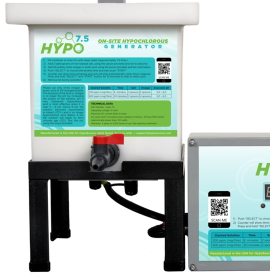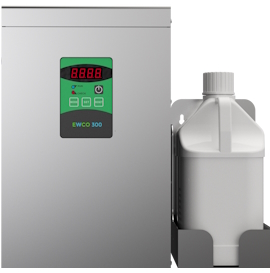अनुसंधान > जीवाणु की खोज > Bacteria > Vibrio
हाइपोक्लोरस तेज़ाब के घोल के सामान्य नाम
- Electrolytically Generated Hypochlorous Acid
- Neutral Electrolyzed Water (NEW)
- Electrolyzed Oxidizing Water (EOW)
- Electro-chemically Activated Water (ECA)
- Super-oxidized water (SOW)
परिणाम : 15 प्रकाशित लेख

Microbe(s): Listeria monocytogenes, Escherichia coli, Vibrio parahaemolyticus

Microbe(s): Escherichia coli O104:H4, Listeria monocytogenes, Aeromonas hydrophila, Vibrio parahaemolyticus, Campylobacter jejuni

Microbe(s): Vibrio parahaemolyticus

Microbe(s): Escherichia coli, Vibrio parahaemolyticus

Microbe(s): Vibrio parahaemolyticus

Microbe(s): Escherichia coli O104: H4, Listeria monocytogenes, Campylobacter jejuni, Aeromonas hydrophila, Vibrio parahaemolyticus

Microbe(s): Vibrio parahaemolyticus

Microbe(s): Vibrio parahaemolyticus

Microbe(s): Vibrio parahaemolyticus, Vibrio vulnificus, Salmonella Enteritidis, Escherichia coli

Microbe(s): Vibrio parahaemolyticus

Microbe(s): (Listeria monocytogenes, Vibrio parahaemolyticus

Microbe(s): Vibrio vulnificus, Vibrio parahaemolyticus

Microbe(s): Vibrio parahaemolyticus

Microbe(s): Escherichia coli, Vibrio parahaemolyticus

Microbe(s): Vibrio parahaemolyticus, Vibrio vulnificus
Best Hypochlorous Acid (HOCL) Generators
 Portable Hypochlorous Acid (HOCL) Machine
Portable Hypochlorous Acid (HOCL) Machine
Make high quality hypochlorous acid in the home or office.
$159.99 + Free Shipping
 HOCL Machine + Electrostatic Sprayer
HOCL Machine + Electrostatic Sprayer
Make hypochlorous acid and spray with an electrostatic cold fogger.
$309.98 + Free Shipping


